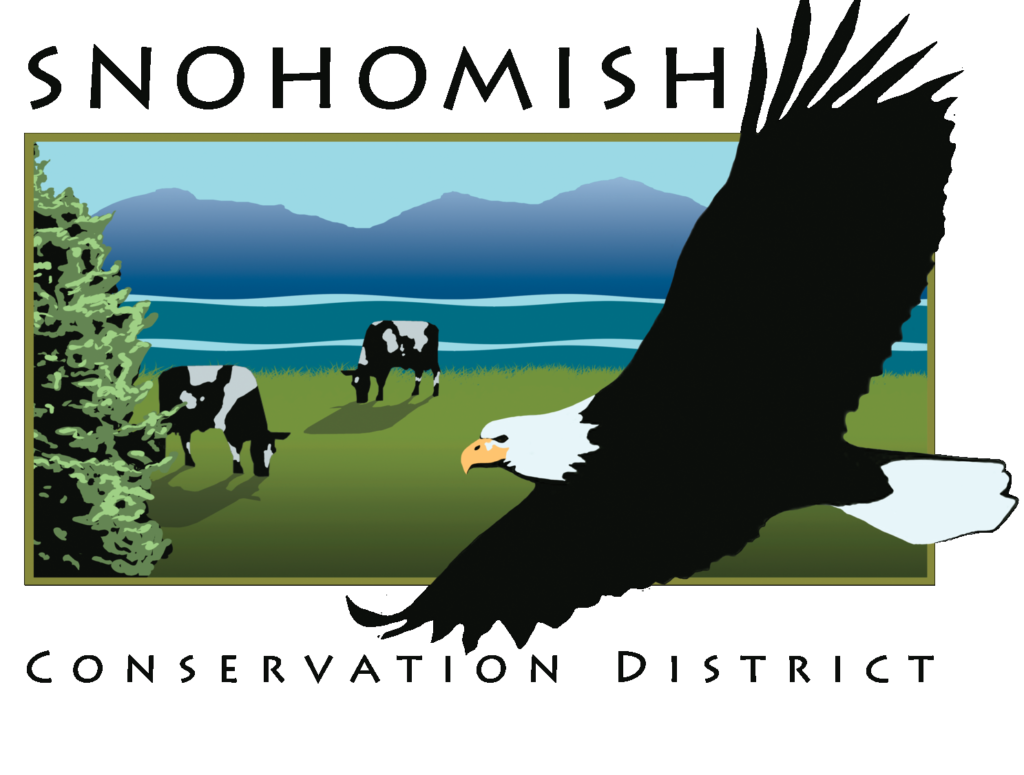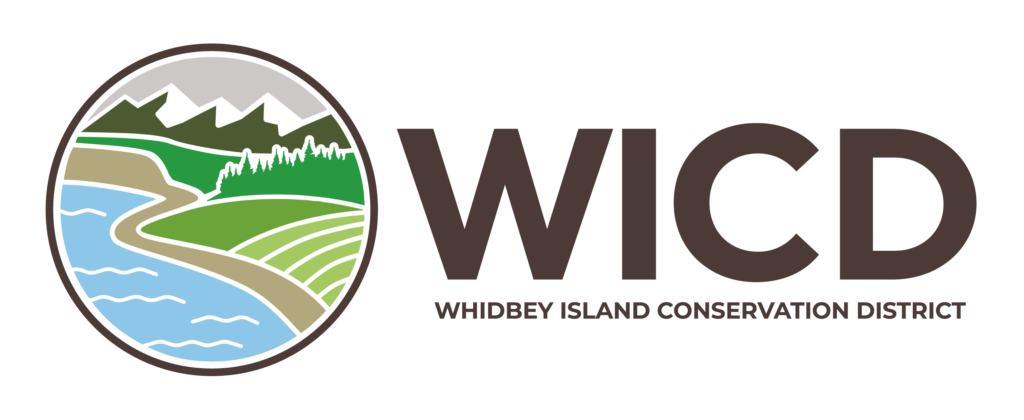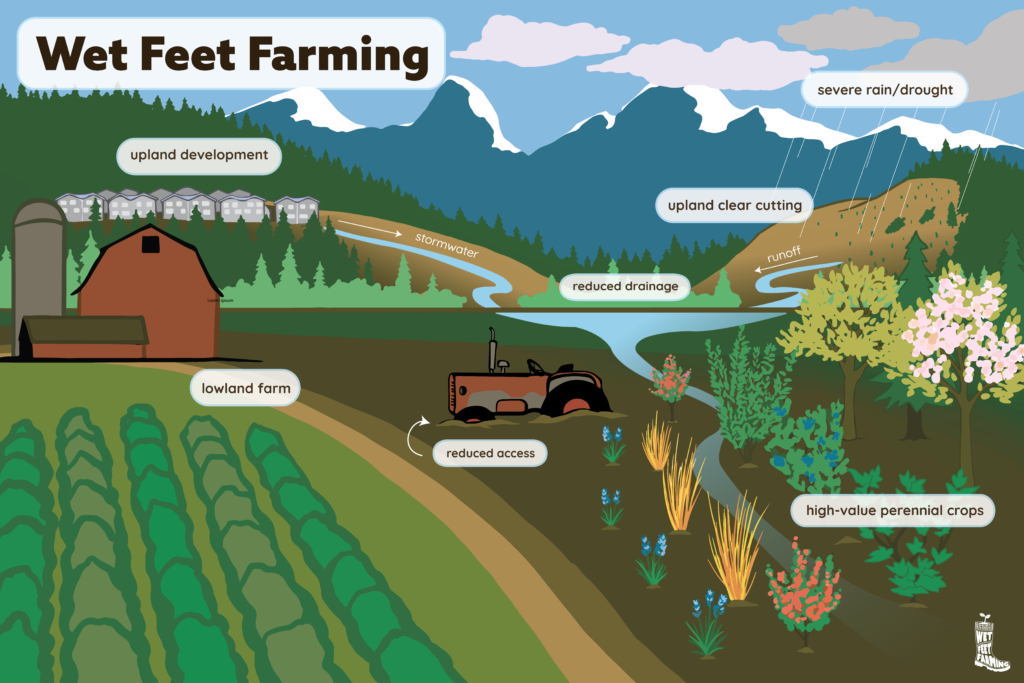Wet Feet Farming
Waterlogged soil? No problem.
Wet Feet Farming is the application of agroforestry practices such as alley cropping, food forests, working buffers, and hedgerows to wet areas on farmland in order to increase production and maximize ecological benefits.
Agroforestry is the intentional integration of trees, shrubs, crops, and sometimes livestock to create ecological, economic, and social benefits.
Farmers with increasingly waterlogged soil face many challenges. Crops may not produce as well or they may become more vulnerable to pests and diseases. A farm that used to get three cuttings of hay in one growing season may have such soggy conditions on the shoulder seasons that they can only get equipment out for one cutting. There may be fields that are harder to turn livestock out on for grazing or that have become hard to access with equipment necessary to cultivate annual crops in the spring.
Why Are Wet Conditions Getting Worse?
Climate Change
While farmers in the Pacific Northwest often have soggy soil for different reasons, climate change is causing our total annual rainfall to become concentrated into fewer months and farmland is often inundated with periods of too much water followed by long, dry summers.
Development
As development in our region expands, this problem is worsened by the increase in impervious surfaces, which causes more runoff, and the loss of forests that once soaked up thousands of gallons of water. Some farms also face challenges with their existing drainage infrastructure.

How is Wet Feet Farming Different?
Rather than draining a field, an agroforestry system of wet-tolerant, high-value perennial crops can address emerging challenges and allow for the holding of valuable water in the soil for longer, dryer summers. By planting species that can tolerate or thrive in these conditions while producing valuable specialty crops, this practice can mitigate farm losses. Click on the tiles below to learn more about Wet Feet Farming.
Meet the Farmers
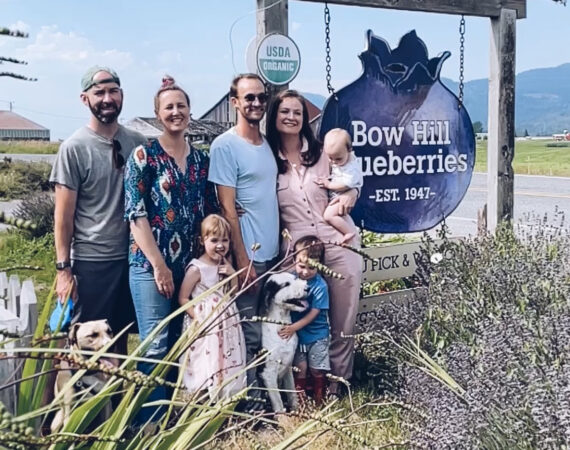
Bow Hill Blueberries
Bow Hill Blueberries is the site of the oldest family-run blueberry farm in Skagit Valley. They partnered with Skagit Conservation District to plant a buffer with aronia, cascara, Sitka willow, osoberry, and snowberry along the slough bordering their property. The buffer will give them an opportunity to diversify income, increase pollinator habitat, protect water quality, and shade out invasive reed canary grass.

Northwest Meadowscapes
Northwest Meadowscapes on Whidbey Island grows and sells native grass and wildflower seed for pollinator conservation, rain gardens, meadows, and wildlife habitat. They worked with Whidbey Island Conservation District to plant a dense and diverse hedgerow that included Pacific crabapple rootstock with French and Spanish cider apple varieties grafted onto the tops.
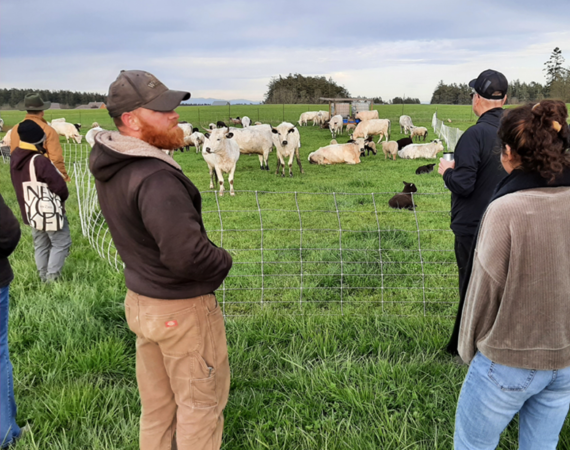
Bell’s Farm
Bell’s Farm on Whidbey Island raises flowers, vegetables, and a “flerd” of Ancient White Park cattle, sheep, and pigs. Bell’s Farm partnered with Whidbey Island Conservation District to install an alley cropping system adjacent to their irrigation pond. The plants in their rows include Pacific crabapple rootstock grafted with cider apple scion, native beaked hazelnut, blackcap raspberry, several varieties of ornamental willow, and California oatgrass. The alleys are planted with forage that they will eventually graze livestock through.
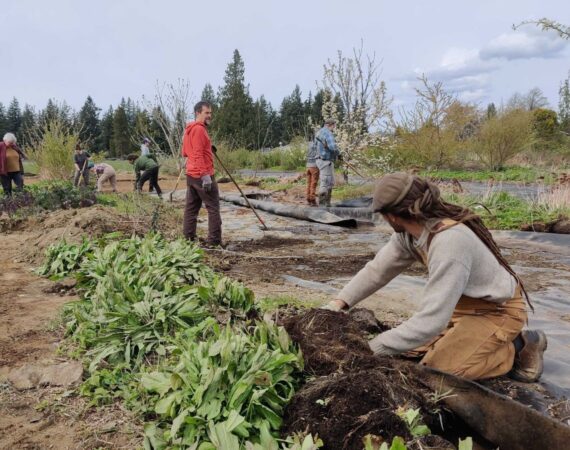
Rooted Northwest
Rooted Northwest is a unique agrivillage in Arlington that combines village living and permaculture farming. They partnered with Snohomish Conservation District to plant an alley cropping system with rows of aronia, hazelnuts, pawpaws, and elderberries with hay in the alleys.
A Regional Partnership
Snohomish, Skagit, and Whidbey Island Conservation Districts and WSU Extension Forestry are partnering to spread awareness about agroforestry in the Puget Sound region. With the support of the WSDA Specialty Crop Block Grant and Western Sustainable Agriculture Research and Education programs, we’re researching how agroforestry practices can help farmers add economic, social, and ecological value to wet farmland, field edges, and areas along water bodies. We partnered with four trial farm sites to test plantings of aronia berry, cider apples grafted on native crabapple rootstock, and basketry willow.



